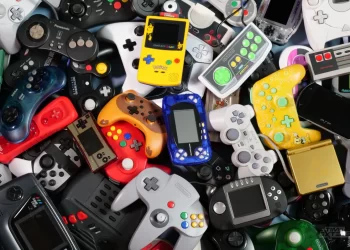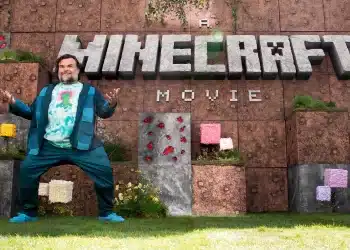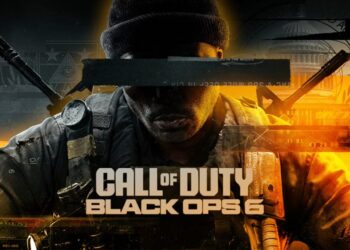By Lennox Gonzalez
Let us travel back to the year 1991 (August 13th of that year to be exact). It was on this date that The Super Nintendo became available here in North America and shipped with a copy of Super Mario World. This was Mario’s big leap to the 16 bit era and a turning point in video game history. We all knew what that meant, enhanced graphics, faster game play, better sounding soundtracks and so forth. The list just goes on and on. Not only did this classic entry in the Mario Bros. series capture all those elements it defined/demonstrated to a tee just what the SNES was capable of.
All that being said let’s talk about the game itself. Anyone who is familiar with Mario games at this point knows that Mario and his brother Luigi are on a seemingly endless task of having to save Princess Peach from the clutches of their arch nemesis Bowser aka King of the Koopas. Sure that’s the gist of every Mario Game for the most part but this game took things to a whole other level. The game centers on the quest of Mario and Luigi to save Dinosaur Land from Bowser, the series’ antagonist. The two brothers must travel across seven worlds to restore order to Dinosaur Land. The game introduced new power-ups that augment character abilities, and established conventions that were carried over to future games in the series.

Super Mario World also marked the first appearance of Yoshi, Mario’s dinosaur sidekick and riding mount (in which you can also dismount from). Though Yoshi is considered to be just one character for the most part there are several Yoshi’s within this game. Like the previous installments SMW was a 2D side scrolling platform game where players manipulated Mario and or Luigi from a third person perspective. In addition to that SMW introduced several new elements and moves where the player can float and fly with the aid of special items (such as a cape) and execute new types of jumps such as the spin jump. The spin jump also allowed you to dismount from Yoshi and break certain bricks and platforms beneath the player. As far as game play goes the player navigates through the game via two game screens: an over world map and a sidescrolling playfield. The over world map is represented in an overhead display of the current world and has several paths leading from the world’s entrance to a castle. The multiple paths connect to action panels, fortresses, ghost houses and other map icons, and gives the players the option to take different routes to reach the world’s goal. Moving the on-screen character to an action panel or fortress will allow access to that level’s playfield. The majority of the game takes place in these levels, populated with obstacles and enemies, with the player traversing the stage by running, jumping, and dodging or defeating enemies. The player is given a certain amount of lives, which are lost when Mario is attacked by an enemy while small, falls into a pit or lava, or runs out of time. Like all previous Installments it’s possible to gain extra lives and If all lives are lost at any point in the game it’s Game Over. Mama Mia! The player fortunately can continue from the last level played by selecting “Continue”. Unlike previous Mario games the player doesn’t have to select continue to advance in the game due to the fact that there are now game slots where your game is saved so one no longer has to play the game in one sitting to defeat it (No more burnt out consoles and risk of fire from leaving the power on, friends).
Each world features a final stage with a boss to defeat; each of the seven worlds feature fortresses controlled by one of the Koopalings. After a boss is defeated a baby Yoshi (still incased in an egg) is rescued and a humorous cut scene ensues. The player also battles the boss of all bosses, Bowser; in his castle at the end of the seventh world. The game itself is pretty linear and easy to navigate but there are also different routes one can take to worlds/maps like the infamous Star Road. Furthermore, the exploration of these secret stages can lead to other stages, such as Special World. Completion of Special World permanently alters some sprites and the over world map’s color scheme. These alternate routes allow the player to finish the game faster and navigate to Bowser’s castle in many different ways. Not only that but several levels have more than one exit, some of which you’ll need to be aware of to progress in the game. These levels with multiple exits are indicated on the map screen by a red flashing light.

As I mentioned before there is a new suit/power up in the game known as Caped Mario/Luigi which is obtained by the cape feather. The cape gives Mario the ability to fly. This suit is also similar to the Tanooki Suit from Super Mario Bros. 3 in terms of gameplay mechanics but with a few alterations: the player can now hold the B button to fly when Mario is able to do so, and can glide using the cape as a sail by pulling back on the D Pad. The cape also allows you to do a nose dive bomb slamming the player to the ground and devastating any enemies who have the misfortune of being nearby. The game also introduced the ability to “store” an extra power-up in a box located at the top center of the screen. For example, if Super Mario obtains a Fire Flower or Cape Feather or picks up another Super Mushroom, a Mushroom is stored in the box. If Cape Mario finds a Fire Flower, a Cape Feather will be stored in the box. The power-up can be released by pressing the Select button or will automatically deploy if Mario is hit by an enemy.
The game introduced Yoshi, a dinosaur companion whom Mario can ride and who is able to eat most enemies (Some even bigger than Yoshi and Mario combined)! If Yoshi attempts to eat a Koopa or its shell, he will hold it in his mouth for a short amount of time before swallowing it; Yoshi can also spit out the shell, which will behave as if kicked by Mario and used as a weapon. Yoshi gains special abilities while holding a colored shell in his mouth: a blue shell enables Yoshi to fly, a yellow shell causes Yoshi to stomp on the ground and emit dust clouds that kill nearby enemies, and a red shell allows Yoshi to produce and expel three fireballs killing enemies and turning them into coins. Flashing Koopa shells produce all three abilities, while green shells produce none. The default Yoshi is green, but the game also contains blue, yellow, and red Yoshis; the player can obtain each Yoshi by finding its egg in Star World and feeding enemies to it until it matures and at that point can now be mounted and ridden. When holding any Koopa shell in its mouth, a Yoshi gains the ability that corresponds to its own color. Super Mario World also included a multiplayer option which allows two players to play the game by alternating turns while navigating the over world map and accessing stage levels; the first player of course controls Mario, while player two controls Luigi. Poor Luigi. Always in Mario’s shadow (Imma Luigi numba two! Sigh.

After the success of Super Mario World, the game was packaged in a special version of Super Mario All-Stars titled Super Mario All-Stars + Super Mario World, which was released in 1993 in the United States and in Europe as the pack-in game for the SNES “Super Mario Set” bundle. The game was also re-released on the Wii’s Virtual Console and ported to the Famicom (with no license) in China.
Well after all that overload of information about the game let’s talk about the game play and other things about the game. The controls: Are very smooth and responsive. You feel very in control of the character and their movements are very fluent and easy to execute. The game itself is very addictive and challenging in its own right. It has the challenge and fun we all love about Mario games. The pace at times can be fast but all in all is very steady and easy enough to keep up with. The replay value is dynamite. The multiple paths one can take allows the player or players to beat the game in various ways navigating through various paths. The sound and music is excellent. Not only is it memorable but one will find themselves humming a vast majority of the songs and its unique sounds effects. The graphics get a solid 10 in my book. Not only are they beautiful and colorful they are very eye catching and appealing even to this day. I for one recommend this game and give it my stamp of approval. If you love classic games and/or are in need of a bit of nostalgia do yourself a favor and break this timeless classic out and give it a whirl. You won’t regret it. This is Lennox aka Nox Hardigan signing off. Game on!


 NFL
NFL






